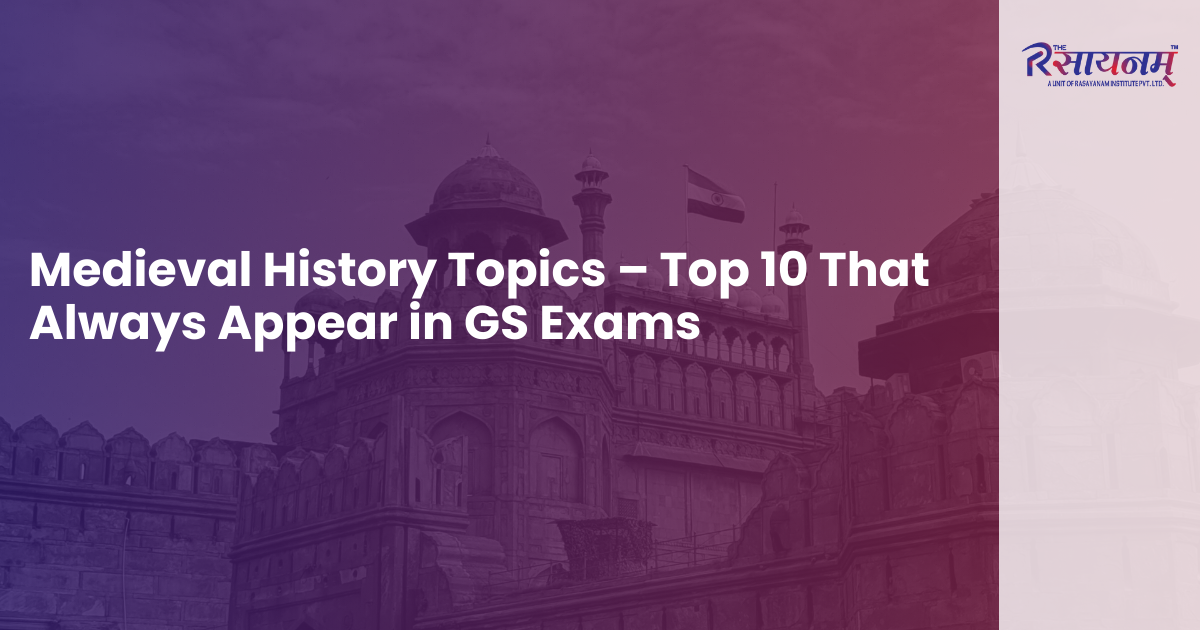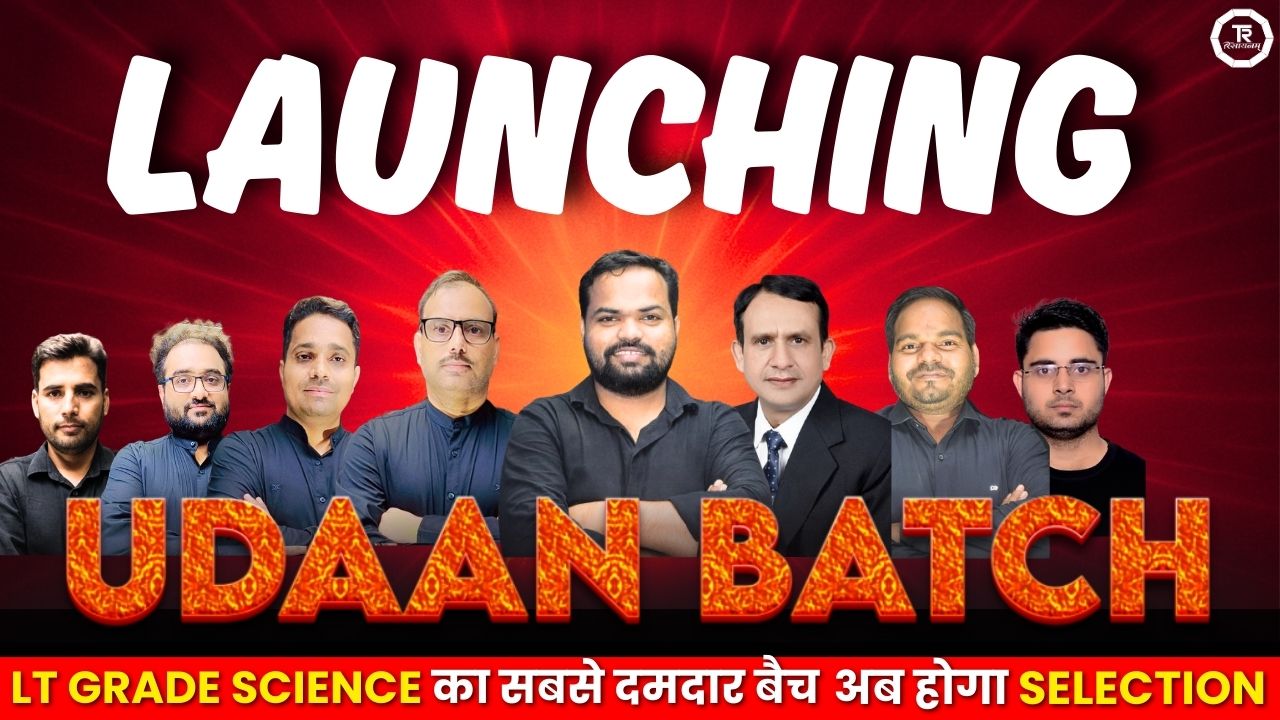
In the world of competitive examinations, Medieval history topics hold a special place. Whether you are preparing for LT Grade, TGT, PGT, UPSC, BPSC, or other government teaching exams, questions from medieval history frequently appear in the General Studies (GS) section. These topics often test not only your memory but also your ability to connect historical events, personalities, and cultural developments.
Many students make the mistake of treating medieval history as a purely factual subject. However, the truth is that understanding the context of these important medieval history topics helps you answer questions more accurately. With a strategic approach, you can secure easy marks by focusing on the most frequently asked subtopics.
In this blog, we will explore the top medieval history topics for competitive exams that you cannot afford to skip. We will also highlight why these topics matter, how they appear in the exam, and how to prepare them effectively.
Top 10 Medieval History Topics for GS Exams
Below are the medieval Indian history topics for GS that appear again and again in various competitive examinations.
- Delhi Sultanate
- Mughal Empire
- Bhakti Movement
- Sufi Movement
- Vijayanagar Empire
- Maratha Empire
- Regional Kingdoms
- Medieval Indian Economy
- Medieval Art and Architecture
- Religious Developments
-
Delhi Sultanate – Rulers, Reforms, and Administration
The Delhi Sultanate (1206–1526) was a significant period in medieval India, marked by political expansion, cultural exchange, and administrative innovation.
Key Points to Cover:
- Five dynasties: Mamluk, Khilji, Tughlaq, Sayyid, Lodi.
- Reforms under Alauddin Khilji (market control, military organization).
- Muhammad bin Tughlaq’s failed experiments.
- Role of Ulemas and Islamic influence on governance.
| Exam Tip: Questions often focus on specific reforms, battles, or succession details. |
-
Mughal Empire – Akbar’s Reign & Administration
The Mughal period is central to repeated medieval history questions in competitive exams.
Key Points to Cover:
- Akbar’s Mansabdari system.
- Religious policy: Sulh-i-Kul.
- Land revenue system (Todar Mal).
- Expansion and consolidation strategies.
| Exam Tip: Akbar-related administrative and religious policies appear frequently in objective-type questions. |
-
Bhakti Movement – Key Saints & Teachings
The Bhakti Movement bridged the gap between people of different social standings, emphasizing devotion over ritual.
Key Points to Cover:
- Saints: Kabir, Guru Nanak, Mirabai, Tulsidas.
- Opposition to caste-based discrimination.
- Influence on Indian culture and society.
| Exam Tip: Questions are often about matching saints to their philosophies or regions. |
-
Sufi Movement – Orders & Influence
The Sufi movement played a significant role in religious harmony during medieval times.
Key Points to Cover:
- Major orders: Chishti, Suhrawardi, Naqshbandi.
- Prominent Sufi saints: Khwaja Moinuddin Chishti, Nizamuddin Auliya.
- Teachings emphasizing love and service.
| Exam Tip: Commonly asked in connection with the Bhakti movement and Indo-Islamic culture. |
-
Vijayanagar Empire – Cultural & Political Contributions
The Vijayanagar Empire was known for its administrative strength and cultural achievements.
Key Points to Cover:
- Founders: Harihara and Bukka.
- Krishnadevaraya’s reign.
- Hampi is a cultural hub.
- Role in resisting northern invasions.
| Exam Tip: Focus on art, architecture, and trade relations. |
-
Regional Kingdoms – Bengal, Awadh, and Deccan
Post-Mughal decline saw the rise of powerful regional kingdoms.
Key Points to Cover:
- Bengal Nawabs and trade relations.
- Maratha Confederacy in Deccan.
- Awadh’s cultural and political prominence.
| Exam Tip: Regional powers often appear in match-the-following or short factual questions. |
-
Architecture – Indo-Islamic Styles
The period gave rise to unique architectural styles blending Islamic and Indian traditions.
Key Points to Cover:
- Features: arches, domes, minarets.
- Examples: Qutub Minar, Humayun’s Tomb, Gol Gumbaz.
- Mughal architecture peak: Taj Mahal.
| Exam Tip: Expect image-based or monument-related questions. |
-
Economy & Trade in Medieval India
Trade flourished due to India’s central position in the Indian Ocean network.
Key Points to Cover:
- Ports: Surat, Calicut, Masulipatnam.
- Trade in textiles, spices, and precious stones.
- Role of guilds and artisans.
| Exam Tip: Economic history often appears in assertion-reason type questions. |
-
Religious Policies of the Mughals & the Sultanate
Religion shaped medieval politics and administration.
Key Points to Cover:
- Comparison of religious tolerance under Akbar vs Aurangzeb.
- The Sultanate’s policy towards non-Muslims.
- Impact on society and culture.
| Exam Tip: Frequently tested in analytical questions linking politics and religion. |
-
Decline of the Mughal Empire
The fall of the Mughal Empire reshaped Indian politics before colonial rule.
Key Points to Cover:
- Weak successors after Aurangzeb.
- Rise of regional powers.
- Foreign invasions (Nadir Shah, Ahmad Shah Abdali).
| Exam Tip: Questions often connect decline with the rise of British power. |
Exam-Focused Topic Table
| Topic Name | Importance Level | PYQ Frequency |
| Delhi Sultanate | High | Very High |
| Mughal Empire | High | Very High |
| Bhakti Movement | Medium | High |
| Sufi Movement | Medium | High |
| Vijayanagar Empire | Medium | Medium |
| Regional Kingdoms | Medium | Medium |
| Architecture | Medium | High |
| Economy & Trade | Low | Medium |
| Religious Policies | Medium | Medium |
| Decline of the Mughal Empire | Medium | High |
Preparation Strategy for Medieval History
Mastering medieval history topics requires a blend of selective study and smart revision.
- Step 1: Prioritize Repeated Topics: Use the 80/20 rule: focus on the 20% of important medieval history topics that cover 80% of the questions.
- Step 2: Use Quality Sources:
NCERT History (Class XI – Medieval India)
State Board history books for local content.
Reference: Satish Chandra’s Medieval India for advanced preparation.
- Step 3: Link Topics Across Subjects: Connect top medieval history topics for competitive exams with art & culture, polity, and economy sections for integrated learning.
- Step 4: Revise with PYQs: Solve repeated medieval history questions to identify patterns.
- Step 5: Practice Timed Tests
Keep your preparation exam-oriented by solving practice papers regularly.
Conclusion
Medieval history topics are an unmissable part of your GS preparation. Instead of trying to cover the entire syllabus equally, focus on medieval Indian history topics for GS that appear repeatedly and carry higher weightage. This will save time and boost your scores.
At The Rasayanam, we help students crack competitive exams with smart strategies, targeted topic lists, and mentorship.
📌 Have questions about these topics? Drop them in the comments below!
🚀 Join Udaan Batch by The Rasayanam for better UP LT Grade Science preparation with targeted medieval history coverage.


